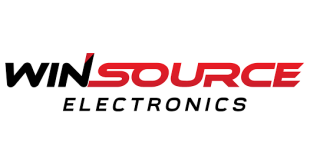Delivering innovation and optimum performance for 10GBASE-T networks
Increasing network throughput is critical for supporting today’s bandwidth-intensive applications. For organisations planning a transition to higher network speeds, moving from one Gigabit Ethernet to 10 Gigabit Ethernet can provide a 10x network performance boost. Considering the expanding volume of high-speed data that is a persuasive argument. Migration has also been made easier with the latest 10GBASE-T products which combine to create a highly cost-effective solution considering the bandwidth increase achievable.
A Challenging Environment
More applications continue to converge on Ethernet. It is the network engineers and installers who are challenged with the task of deploying a cost-effective, scalable, and reliable network infrastructure across vastly different environments.
Many organisations target the compute centres as the start point for any transformation. However, upgrading servers alone, when still running a one Gigabit (1000BASE-T) network, or using SAS storage, will lock performance in the server, creating bottlenecks. When it comes to upgrades, storage and networking infrastructure are often overlooked. Making even minor adjustments to component configurations can have a huge impact on network performance.
One of the most important decisions to be made when rolling out network upgrades is typically choosing the media type, BASE-T, Direct-Attach Copper (DAC), or Fibre. DAC is relatively inexpensive when compared to fibre, but its short reach limits deployment flexibility. Fibre offers the longest cabling distances, but is most often used for higher port speeds, as the cost is higher and it’s more complex to install.
Trends show that over 80 percent of 1000BASE-T networks upgrade to 10GBASE-T, a key reason is that if you have a 1000BASE-T network, you’re already wired for expansion. RJ45 sockets are everywhere, and with field-terminated cables, it’s easy to deploy and provides the opportunity to take a staged approach to migrating to 10 Gigabit Ethernet.
Backwards Compatibility Reduces Risk
- The familiar RJ45 interface simplifies migration, is backwards compatible, and allows you to take a staged approach to migration. 10X greater bandwidth when migrating 1000BASE networks to 10GBASE-T. Furthermore, 10GBASE-T is the most budget-friendly 10GbE option, compared to DAC (Direct Attach Copper) or fibre.
10GBASE-T
Image: Comparison Table:

10GBASE-T is likely the most cost-effective and least-disruptive path for upgrading from 1000BASE-T. With a 10X performance improvement, it’s a solid financial decision, and it’s budget friendly. Also, because it uses the RJ45 connection, with field terminated cables, there’s no steep learning curve to overcome.
When migrating from 1000BASE-T to 10GBASE-T, you can reuse your Category 6A (Cat 6A) cabling and save money. But, for any new cabling or cabling upgrades, there are several things to consider: Cable diameter, alien crosstalk, and electromagnetic interference (EMI).
Image 2 – Expand Cable Capacity

The size of the cable is important to ensure that cabling can fit in both new and existing pathways. Panduit’s Cat 6A Vari-MaTriX cabling offers the smallest diameter cable available in the market today. With a diameter of 6.6mm >2, Vari-MaTriX cables provide 20-30 percent more capacity in pathways enabling customers to increase the number of cables they can safely pass-through new conduit or cable trays. It also enables cost savings, allowing customers to seamlessly swap out existing CAT 6 or Cat 5e cables to Cat 6A in existing conduits and pathways.
Alien crosstalk and EMI
Alien crosstalk results from unwanted electromagnetic coupling between conductors in adjacent cables tightly bundled or packed together. Both alien crosstalk and EMI lead to difficult-to-diagnose dropped packets on the network.
Image 3 – Crosstalk and EMI Interference Solution

Cable companies have various solutions to this; some add additional space to create physical separation between the conductors of the cables. But this results in larger cable diameter. Other cables use a solid foil barrier for mitigation of alien crosstalk in bundles. However, solid foil barriers can act as an antenna which increases susceptibility to alien crosstalk and EMI.
Vari-MaTriX uses a discontinuous metallic foil barrier and provides superior EMI and alien crosstalk performance, thereby removing a traditional constraint on cable size.
In addition, all Panduit plugs and jacks are designed to prevent damage on the critical plug and jack mating point when arcing occurs at removal in systems carrying Power over Ethernet. This is important to ensure reliability of a physical network system.
Conclusion
Customers are achieving 10GbE performance more easily and cost-effectively than ever before migrating from 1000BASE-T to next-generation 10GBASE-T products. Panduit has validated its Vari-MaTriX cables with Intel’s latest generation of 10GBASE-T adapters to ensure customers can achieve the performance benefits of 10GBASE-T, thereby avoiding network bottlenecks and difficult-to-diagnose dropped packets.
 CIE Components in Electronics
CIE Components in Electronics

